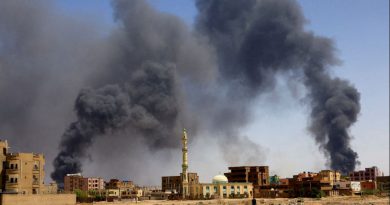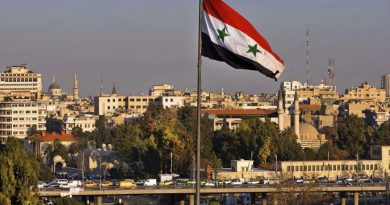Iran’s state of the economy at the beginning of Raisi’s presidency
by Cyrus Yaqubi
At least 80% of the country’s problems are due to inefficiency and corruption of officials.
During the forty years since the anti-monarchy revolution, Iran has earned nearly $ 1,377 billion in oil sales, of which about
$ 700 billion was earned during Ahmadinejad’s presidency. However, when Ahmadinejad’s eight-year term ended, he left nothing but a ruined and bankrupt economy.
Because in addition to the theft and looting of Iranian nation’s assets by those around him and the corrupt ministers of his cabinet, he had spent the country’s income to the Revolutionary Guards, internal repression apparatus, exporting terrorism abroad, and Iran’s missile and nuclear programs. . The people of Iran benefited absolutely nothing from the windfall during the Ahmadinejad era.
After his departure and the arrival of Rouhani, the situation worsened so much that during Rouhani’s term, the rate of theft and astronomical looting of the country’s assets broke a record. Some of these huge thefts that were exposed during the factional disputes revealed their dimensions.
For example, it was revealed that Ali Rastegar Sorkheh, who was the CEO of Sepah Bank, with the help of Hossein Fereydoun, the brother of President Hassan Rouhani embezzled more than 3,700 billion tomans (Iran’s currency) from this bank. In another case, two women affiliated with Rouhani’s brother embezzled 600 billion tomans and left Iran. The above are just two embezzle cases among tens and hundreds.
Rouhani, being part of the circle of corruption, instead of trying to stop these corruptions, tried his best to either ignore them or justify them through lies and deceiving. Time after time, he promised a better future for the people of Iran and delivered hollow promises in almost all his speeches, which were too many.
But now, after eight years in power, the situation in Iran is so devastating that he himself cannot hide it, but now he blames the failure of his government on President Trump and US sanctions.
Meanwhile, according to a regime official, at least 80% of the country’s problems are due to inefficiency and corruption of officials and have nothing to do with the sanctions.
The situation in Iran is so bad that according to experts, at no point in the last 42 years, even during the eight-year Iran-Iraq war has the situation in Iran been so critical, and now that Raisi who is more illiterate than Rouhani, and knows nothing about management or economy is appointed as president, you could imagine what will happen.
According to a regime’s expert, the social and economic problems Raisi will be facing are like a minefield. Every step, in any direction, could end up on top of a mine, leading to explosions and the collapse of the regime.
This expert has defined some important characters of this minefield as follows:
1- The budget deficit of 350,000 billion tomans for this year, that we are midway through. Due to the continuation of US sanctions, including oil exports, which is Iran’s main source of income, the budget deficit will be impossible to cover in the short term. The state of Iran’s economy is so bad that the regime is experiencing difficulties with government employees and workers and as usual will print banknotes without backing. This growth in liquidity, which has been around 40% over the past four years, will intensify to unprecedented inflation, which is now above 50% and for some essential items close to 80%. It has caused more than 60% of the country’s population to fall below the poverty line and the middle class to disappear. High prices of almost everything has been instrumental in forcing more than 38 million people to move to the outskirts of cities and live in shantytowns that lack basic facilities.
2- Lack of transparency of Iran’s banking system is another problem that has intensified significantly during the eight years of Rouhani’s term and the government’s debt to pension funds has grown significantly. Rouhani’s government has continuously withdrawn money from these funds to cover its expenses, which resulted in increasing government debt and further devaluation of Iran’s national currency. In 2020, the Iranian currency was the second weakest circulating currency, only behind the Venezuelan Bolivar, and its value has depreciated by more than 3,500 times compared to the beginning of the revolution. According to the head of the Tehran Chamber of Commerce, the resilience of Iran’s economy now ranks 128th out of 130 countries. On the other hand, Iranian society has witnessed a continuous rise in class differences to an incredible extent over the past eight years.
In a government that claims to be the government of the oppressed, the vast majority of people live below the poverty line, on the other hand, according to Forbes magazine, despite the continuation of sanctions and the Covid 19 pandemic, that has hit the global economy hard, in Iran, 250,000 people live with an income of more than one million dollars a year. Thus, Iran ranks fourteenth country in the world in terms of the number of millionaires and ranks first in the Middle East.
This level of wealth is rooted in bribery and corruption that seems to be surgically attached to this regime and has become its fabric. Meanwhile, as mentioned before about 60 percent of Iranians live below the “official poverty line” and about 30 percent below the “absolute poverty line.” In fact, in Iran today there is a very small class of “super-rich” associated with the regime and a very large class of “absolutely poor”, who are ordinary people.
Clearly, this situation can no longer be sustained, and the patience of the disadvantaged people who have faced poverty, unemployment, Covid-19, droughts, continuous power outages, and a host of other social and economic problems are being tested every hour of every day.
Right now Iranian people are controlled only with violent repression by the security forces. But imminently Iranian society will erupt like a volcano, as in the November 2019 uprising due to the increase in gasoline prices, that we saw a prelude to. This has happened many times in history, and Iran and the ruling religious dictatorship are no exception. Many experts believe that Raisi will not see the end of his four-year presidency.
Cyrus Yaqubi is a Research Analyst and Iranian Foreign Affairs Commentator investigating the social issues and economy of the middle east countries in general and Iran in particular.



